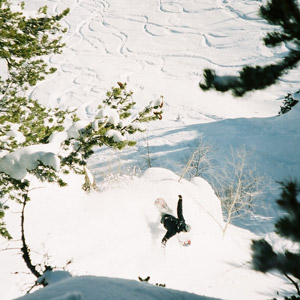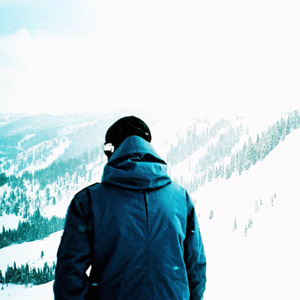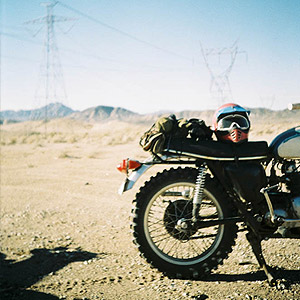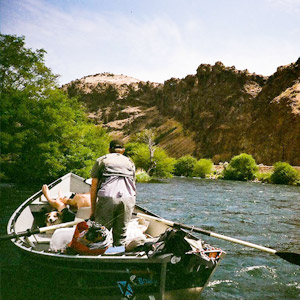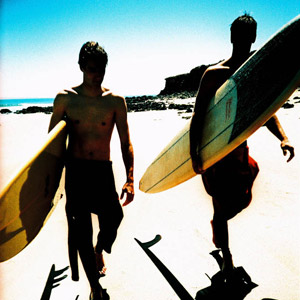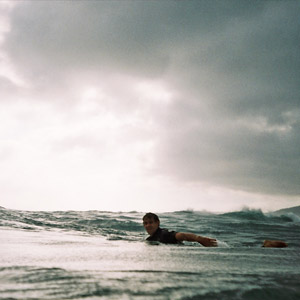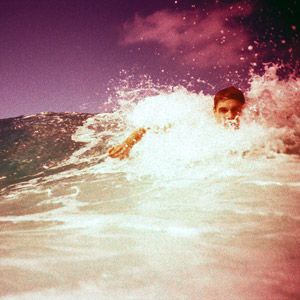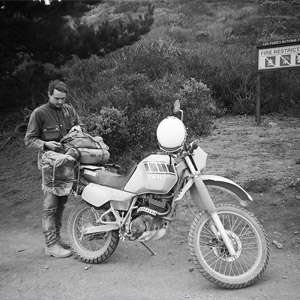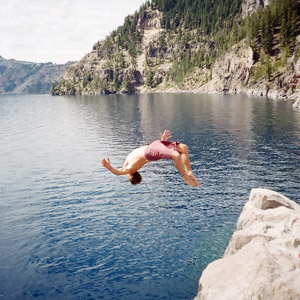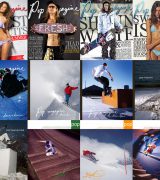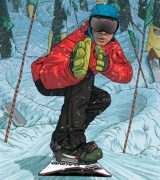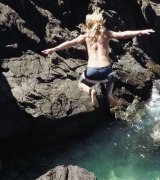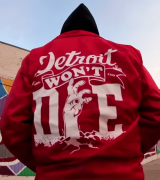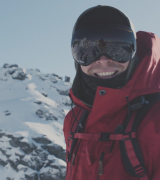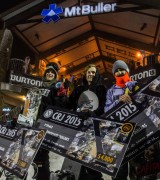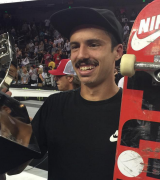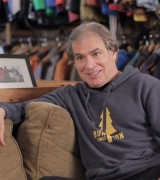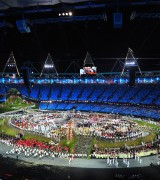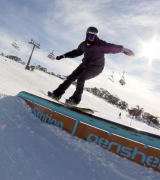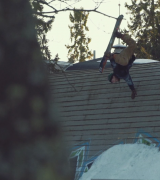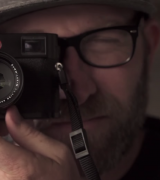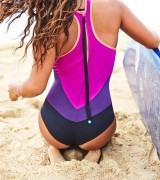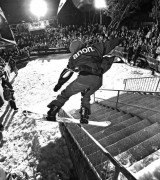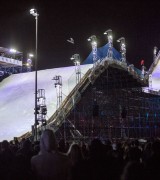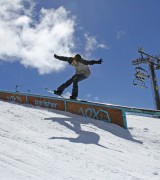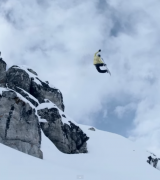
Ever wondered about the technology that goes into the sports we do? Confused about why you want a reverse camber snowboard, why US wood is better than China wood in skateboards or about the ‘surfboard theory’ between pro-finish and glass? This is going to be a series of articles about these technologies that improve what we do. I’ll cover the advantages, the disadvantages and break through the marketing and spin that goes on so that you can make better choices about what you’re buying.
The first one I’m going to cover is ‘reverse camber’ snowboards. A few years back at SIA in Las Vegas, Rick and I came across the Lib Tech booth where they had one ‘Banana’ (reverse camber) board on display. The guy in a banana suit manning the booth laughed with us saying that “He couldn’t believe that Travis Rice has been riding one,” and “The thing was a just a joke.” Come the ’09 season and I don’t think that there is a single board company not doing a reverse camber board. For a lot of crew out looking for a new board, I thought it might be helpful to know the history and benefits of the reverse camber boards as well as giving you the low down on a few of the popular models. Read More to read more.
![]()
First off – What is reverse camber? For that matter, what is camber? The traditional camber of a board is the arc shape the board makes when it’s on the ground. The theory behind the design originally was that when “exiting a turn the pre-sprung wood creates a feeling of energy as the plank returns to its original shape. Combining camber with the longitudinal flex of the plank allowed manufacturers to create varying degrees of power and life.” So reverse camber is obviously the opposite – when flat on the ground, a reverse camber board is bowed upward from the middle. I will get into the advantages of reverse camber later on but for ease of reading, here are a few names different manufacturers use for their version of reverse camber:
– Burton, LibTech and Gnu call it reverse camber. Lib and Gnu sometimes call it Banana Technology. Their boards bow from the middle to the tip(generally speaking, there are variations between models).
– K2 and Ride call their version Rocker, the difference being that their boards are flat between the bindings and rise from the binding to the tip(generally speaking, there are variations between models).
– Nitro has Gullwing. Reverse camber between the bindings with slight camber in front of each binding.
Then of course there are the plethora of other manufacturers such as Rome, Never Summer, Signal, Technine, Stepchild, etc… who all have their own variations of reverse camber technology
For the vast majority of riders, the difference here is marketing – who’s version sticks in your mind when you’re in the store. Although there are subtle differences, unless you’re an incredibly experienced rider it will be hard to tell. In my opinion, a better bet for selecting the right board is to try a few different brands, there will be one that has a ‘feel’ that sits better with you.
The advantage of riding a reverse camber board is that they ride more like a skateboard than previous snowboards in addition to the ability to ride a shorter board in powder, initiating turns is easier for beginners, the tip and tail catch less as the contact points are raised.
The history of reverse camber technology is interesting. Many people believe that it is a recent development in board technology when in fact, there have been reverse camber boards for nearly two decades. It’s hard to credit the original developer, I have heard everything from Never Summer to Morrow with different, long gone, board models quoted as the pioneer. The upshot is that the technology was pretty much uniformly shunned for the next twenty years. Mervin Manufacturing, the creators of Lib Tech and Gnu snowboards, are the ones that really bought the design to the mainstream with a mix of good marketing and good design. According to Document Snowboard Mag in the UK, Mervin created the board “When Travis Rice wanted us to make him a super short board for some step-up, jump dorkin’ around filming. We made him a couple and then the light bulb went off. With this short a board, it was ridiculous to have camber between the feet at all because there was no effective tips and tails to reverse the camber to make efficient turns. So we made a 156cm version of the theory of Banana between the legs that reverts to flat from the bindings to the tip and tail.” This development and the popularity of Lib’s boards last year has led many companies to follow with their own versions this season.
![]()
So, if you’ve got a fist full of government bonus cash and are looking for your new reverse camber board, what are the choices? I spoke to a few of the brand managers and here’s a few of the boards and the sales pitch to go with them…
LibTech Skate Banana
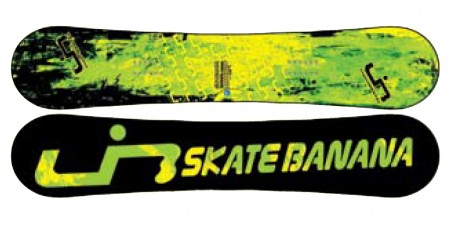
Tone from Lib/Gnu says: Traditional snowboards need camber to keep the contact points at the tip and tail of the board in the snow. The Technormous Brocknowlogists at Mervin mfg found that because Magne–Traction gives you contact points between your feet camber is no longer needed. The all terrain quiver killing Skate Banana is born and freedom hating cambered snowboards slowly become extinct. Bananas are easier to ride and work better everywhere especially if you are an average dude, pro, girl or radical shredder. Welcome to the age of fruity enlightenment.
GNU Park Pickle
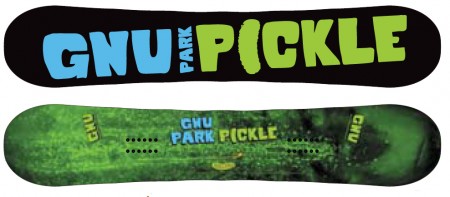
Tone from Lib/Gnu says: The Park Pickle is an asymmetrical twin banana with Magne-Traction. Because you have ten toes on one side of your board and just two meaty heels on the other side, a tighter sidecut on the heel edge of a pickle evens out your turns. Banana between the feet with Magne-Traction is unreal for floating in powder, carving radical turns on groomers, catch free jibing, ice, jumps, slush, bumps, ect. Get weird on a pickle, it will blow your mind.
K2 JIBPAN.
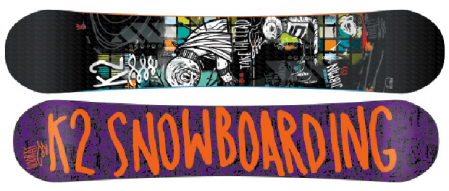
Linc from K2 says: The Jibpan got beefed up even more for 0910. Inside the Jibpan you’ll find the best, most tech assembly K2 has to offer and we upgraded the Jibpan adding our Jib Rocker, giving this board an even more playful feel. Pressing becomes easier. Your ride is catch-free and more manoeuvrable. K2’s Jib Rocker is flat between the feet and your contact points are out of the snow at all times, making this board so easy to progress your riding. All this plus an unreal graphic contribution from Michael Sieben make this bad boy the park and rail super weapon…
Nitro SubPop

Mark from Nitro says: The SUB POP is making waves already. TRUE TWIN with a negative camber, shaped like a gull wing. The gull wing shape in comparison with other negative camber styles gives you way more support when landing off balance without the board shooting out from underneath you. The basic idea of the negative camber remains. Taking pressure of the contact points make these desks ride super loose..
Burton Hero
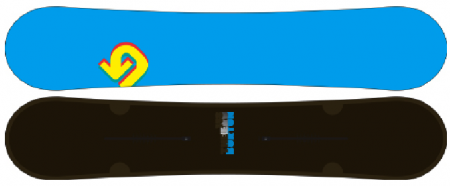
Shane from Burton says: Meet our latest rocker design and newest freestyle weapon The Hero. V-Rocker on the Hero features a rocker between your feet, with additional rockers toward the nose and tail for super human foot control, press ability and pop. Buttery Scoop tips only add to the all-around boosted performance. For as mellow and forgiving as the hero feels, it carves like like a sword thanks to the added grip of Pressure Distribution Edges. No wonder the hero won Twsnow’s Good Wood Award and is the board every tester tries to steal. And Nick Gregory threw in: “Loving the reverse camber boards. Was riding the Hero 55 and the Custom 54(2010 early release to team rider’s) in Japan and Utah and they both were amazing in the powder and a lot better than I expected in the park (especially the Custom). The reverse camber allows you to ride a smaller board and have a more centered stance on those deep pow days which really helps with riding and landing switch. 2 thumbs upwards.”
Forum Scallywag
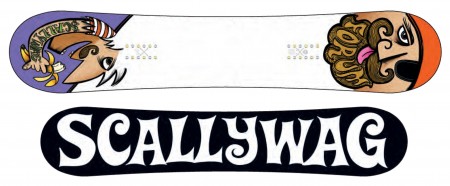
Ralph from Forum says: It’s not the screaming pirates, pillaging or drinking ale that makes this board so good to ride – although it helps – it’s the Chilli Dog technology that gives this board it’s arrrrrrrrrrrr. The continuous reverse camber makes the Scallywag buttery and catch-free whilst giving you the tools to slay the park. Available in wide.
More Info:
www.reversecamber.com
Document Snowboard Feature


